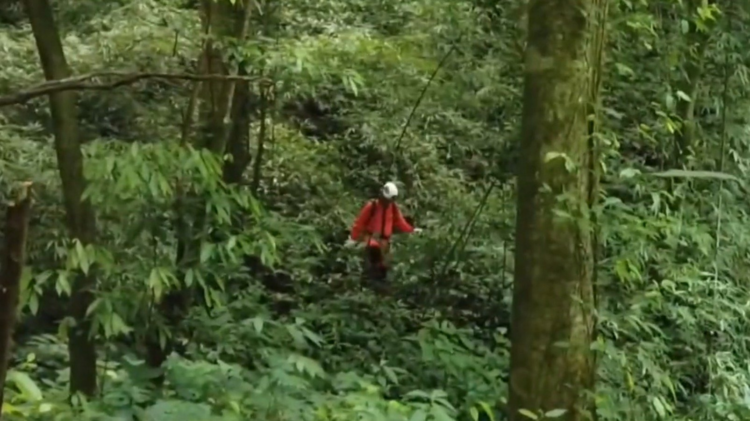A Chinese sinkhole was recently found in the middle of the dense forests of the Guangxi Zhuang Autonomous Region, featuring a lush ecology at the bottom with beyond healthy plant growth.
While a team of explorers has already returned from an initial expedition, they believe there’s more to discover in the sinkhole’s unique environment, including new species never seen before in the world of science.
A newly-discovered sinkhole in China holds a world of discovery.

A team of cave explorers recently took to the 630-foot-deep sinkhole to discover what lay at its depths. It’s existed undisturbed for at least a few decades thanks to it being in the middle of a lush, often untraversed forest, meaning it’s had plenty of time to develop its own ecosystem.
The area where this hole was found is known for its caves and sinkholes.

So while this find isn’t unnecessarily uncommon, it having gone undiscovered for so long makes it truly unique.
The hole features three separate caves and measures an approximate 5 million square meters, equal to about 2000 Olympic swimming pools. It was found in the Guangxi Zhuang Autonomous Region, near Ping’e village in the county of Leye. This is the 30th sinkhole that’s been found in the area.
The leader of the cave exploration team has already shared much of what they found.

Chen Lixin told Chinese news agency Xinhua that there are ancient trees approximately 130 feet tall, as well as many dense plants that grew up to the explorers’ shoulders.
“I wouldn’t be surprised to know that there are species found in these caves that have never been reported or described by science until now,” Lixin said.
Cave explorers around the world are becoming interested as well.
Executive director of the National Cave and Karst Research Institute in Carlsbad, New Mexico George Veni told Live Science that he thinks “this is cool news”.
He’s also less than surprised about the location, though, saying the area is known to be an “incredibly visually spectacular karst with enormous sinkholes and giant cave entrances and so forth.”
The explorers returned from their initial expedition on May 6.
They initially rappelled more than 330 feet down and walked for several hours afterward to reach the true bottom of the cave. They reckon the sinkhole measures approximately 1000 feet in length, 500 feet in width, and 630 feet deep.
While no new species have been discovered yet, who’s to say what future explorers will find in the depths?
h/t: USA Today

















































